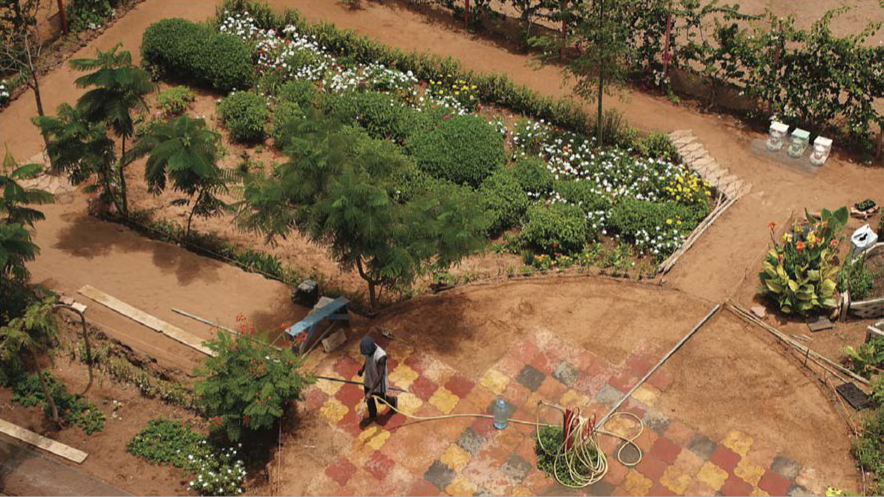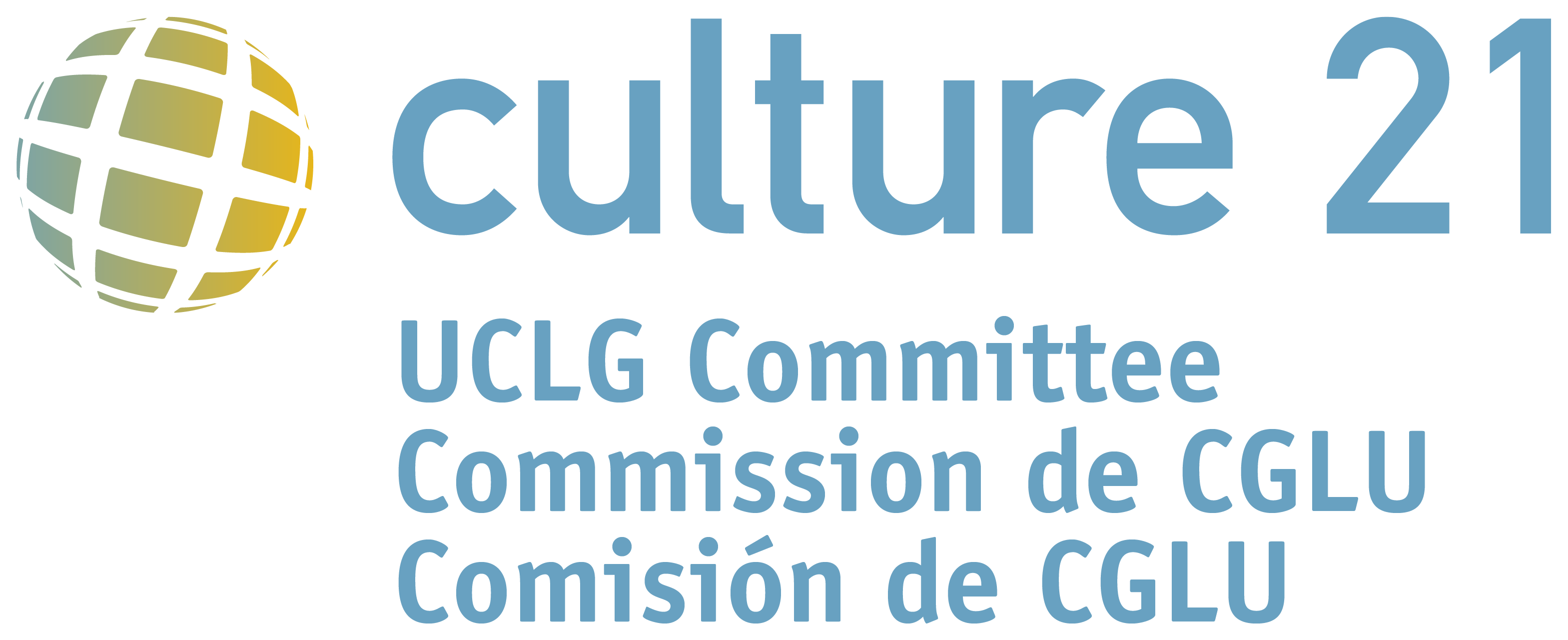 - © UCLG Committee on Culture / City of Dakar
- © UCLG Committee on Culture / City of Dakar- - © UCLG Committee on Culture / City of Dakar
- - © UCLG Committee on Culture / City of Dakar
City
Dakar
Main actors
City Government, NGO / Philanthropy, Community / Citizen Group, other
Project area
Neighborhood or district
Duration
Ongoing since 2011
Making the city of Dakar a place of experimentation and new opportunities.
The School of the Commons enables artists to develop collaborative practices by experimenting with new ways of engaging with communities around the concept of living together. This initiative supports artistic production along by strengthening skills, and links cultural and political capabilities. The unique methodological expertise arising from this project will be shared.
The project draws on several of the founding principles of free culture; knowledge sharing, free access to culture and education, research, experimentation, relaying of information and respect for diversity. Using free software - Do-It-Yourself/Do-It-With-Others, free licences (Creative Commons) and shared knowledge - alternative business models are tested on audiences including residents, craftspeople, DIY enthusiasts, computer engineers, developers and cultural actors.
This study case has been elaborated on the basis of a good practice provided by the City of Dakar and promoted by the Committee on Culture of United Cities and Local Governments. The original document can be found here.
The city of Dakar has been the focal point of an ambitious cultural policy, with the emergence of several urban developments and cultural facilities between 1960 and 1980, in particular in the SICAP district. SICAP is part of the name of several districts in Dakar that were planned and built by the Société immobilière du Cap-Vert (SICAP). SICAP is where several cultures from Senegal, West African sub-regions and Cap-Vert form a singular identity, one that is highlighted by its diversity and openness. Due to the influence of *structural adjustment policies, a lack of public investment and impoverished citizens, public spaces along with educational, cultural and sanitary facilities have deteriorated over the years.
The City government of Dakar has been formulating a cultural policy based on consultations with cultural stakeholders and centred around supporting creation, distribution and training actors. A redevelopment programme has been launched for the 17 socio-cultural centres through urban culture and plastic art workshops. The three main actions involve vocational training for cultural actors, creation and promotion. A cultural initiative support fund has been put in place that will subsidize projects that have been examined by a jury of professionals from civil society.
* Structural adjustment is a term used to describe the policies requested by the IMF (international Monetary Fund) in condition for financial aid when dealing with an economic crisis in. The policies are designed to tackle the root cause of the problem and provide a framework for long term development and long-term growth.
GENERAL GOALS
G1 - Identify the common good to be used for citizenship development, through culture and artistic practices.
G2 - Democratise culture and common goods among populations of all ages and backgrounds in Senegal.
G3 - Use culture to gain recognition from politicians and citizens and harness their ability to act on behalf of common goods within their local area.
G4 - Provide decision-makers with arts and culture as effective tools for sustainable development and the preservation of common goods.
SPECIFIC
SG1 - Use culture as a vehicle for educating the general public on the preservation of common goods.
SG2 - Promote art as a vehicle for involving inhabitants in the management of their city.
SG3 - Contribute to training, structuring and promoting young artists.
SG4 - Test the self-management of an 'in-common' space through culture.
SG5 - Train young social mediators by implementing citizen projects.
The following activities will be held:
- regular workshops and cultural activities for the general public around the garden
- discussions and learning circles on topics specifically related to the common good (priority shall be given to young people and women
- a cultural and multidisciplinary programme with artist residencies and a cycle specifically dedicated to women
- art, crafts and open-source technology workshops
- the building of a participatory playground with architectural students from Dakar
- the extension of the garden with an educational space dedicated to ecological professions and training for future career prospects in the fields of ecology or sustainable development. The artistic ‘Jet d’Eau’ garden was built by the artist Emmanuel Louisgrand, in collaboration with local craftspeople and gardeners
- the redevelopment the old Jet d'Eau library including its regeneration, digitalization and the organization of small events (e.g., reading sessions, poetry slam workshops)
- the opening of a FabLab at city level in Dakar. The Defko Ak Niëp FabLab (Do-It-With-Others), is a space for sharing digital means, and is part of an alternative approach to free culture that prioritises the sharing and enrichment of common goods, with electronic workshops for young audiences, PC refurbishment workshops and 3D printing presentation evenings have been organised on a regular basis.
Outreach, listening and educational work was carried out with residents and local community organisations including institutions, mosques, associations and social centres, before the project was implemented.
In the spring of 2014, the 4th Afropixel festival schedule, called the 'Jardin de Résistance' (Garden of Resistance) was based around the ‘School of the Commons’, with a rich and diversified programme (workshops, conferences, artists residencies, web radio), attracting an audience of approximately 3,000 people during one month.
The project is led by the NGO, Kër Thiossane, the first pedagogical artistic and cross-disciplinary laboratory related to digital technologies and new communication tools in west Africa.
Kër Thiossane decided to formalise the various initiatives it had started by opening a school around the concept of an everyday 'In-Common' facility. The project was launched to address serious issues taking place in urban areas, including neighbourhood conflicts, public spaces that had fallen into disrepair and a lack of infrastructure. This is based on the idea that creativity demonstrated by groups and individual citizens can counteract these situations and encourage citizens to reclaim and promote their city through a creative approach, thus making it more hospitable, sociable and secure.
Impact on the local government
The project has helped the city government’s various departments to understand the opportunities that are created by setting up cultural projects; to assess the benefits of using a common good concept as a way of encouraging people to take responsibility for local environmental, educational and cultural issues; and to establish an effective method for attracting a wide audience for digital art.
Impact on culture and local cultural actors of the city
The project has inspired a Dakar Ville Creative Arts Numériques (Dakar City of Creative Digital Art) approval scheme, which the city uses to join forces with initiatives that promote digital art. It has been involved in a restoration process for the municipal SICAP library.
Impact on the city and its population
As a result of the project, artists from Dakar (e.g., plastic arts, music, urban culture, literature) have benefited from the use of a space where they can relate to the concept of common goods. Artists have been able to discover skills and tools that may improve their crafts. School, college and university students have been able to express their creativity. The SICAP inhabitants have seen their neighbourhood adorned with a public garden, a FabLab and a place for discussing common goods.
Transversal impact
Economically speaking, the impacts of the project are the creation of developer, artist landscape gardener jobs in the SICAP area; the training and introduction of craftspeople on 'Makers' practices; the promotion of software and open-source culture; and the development of an open source mapping software. Environmentally speaking, the project permitted the renovation of a public space as an open space to the public, with a playground for children and a training space for jobs in the field of ecology.
The main challenge was ensuring Kër Thiossane remained an experimental common goods project in terms of artistic creation and sustainable development while including local actors.
The other challenge involved losing sight of the meaning of 'common good' within urban areas in Senegal, where individualism has a greater bearing than community spirit, and where it is difficult to get people involved on a voluntary basis without offering them personal, political or religious benefits.
The provision of infrastructure has been slow to develop, and the recruitment of qualified cultural mediators is not yet in place. Moreover, the grant funding ensuring the sustainability of the supported initiatives will not suffice.
‘School of the Commons’ has successfully implemented the concept of “sharing and hope” in an abandoned public space. Local residents now start thinking of ways to enhance their surroundings. The ‘School of Commons’ has enabled residents to meet each other and discuss their local area. Artistic actions have combined urban cultures, photography, digital technology and modern art with more traditional forms of creativity, such as SIMB (false lion) ceremonies and fashion.
Researchers, sociologists, art historians and the local population have already begun to document and evaluate the project. The expertise gained will be shared at local and regional level and will be combined with the international experience of Living Labs, particularly for more contexts in southern areas; it will contribute to renewing sustainable cultural policies and will become a source of knowledge and innovation in terms of culture and common goods.
After the social forum in 2011, Kër Thiossane established a depository of common goods and within the last two years, has produced feedback and content, both locally and internationally shared. It has also actively contributed to the network through the establishment and running of facilities emerging in different intercultural contexts in the North, enriching them with perspectives from the South (http://www.remixthecommons.org/)
Moreover, the City of Dakar has joined the UNESCO Creative Cities Network, in order to
1) unite digital technologies and art
2) support creators and ensure they have access to digital tools
3) encourage the population to adopt digital technology
4) contribute to enhance the local creative economy.
On Map
The Map will be displayed after accepting cookie policy



